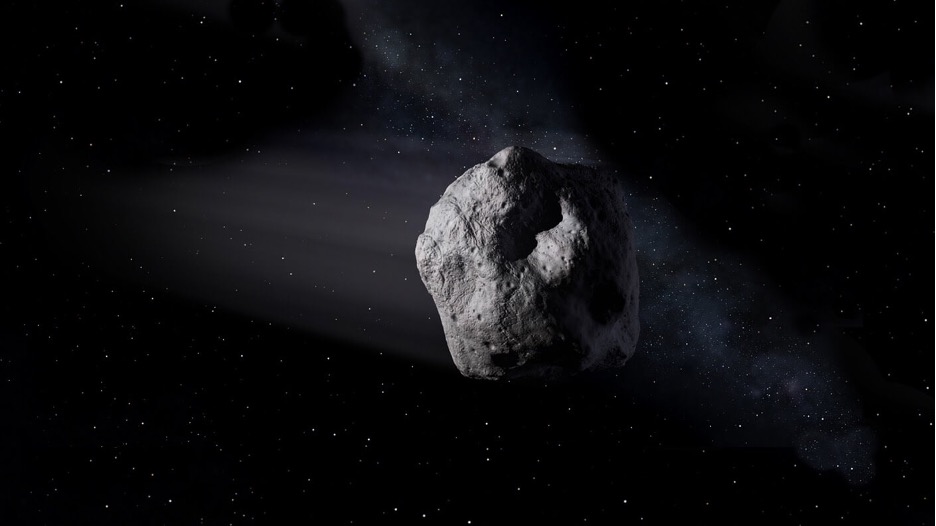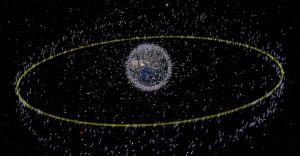The Most Exciting Projects to Watch for in Space in 2023
14th Dec 2022
There seems to be no end to the developments in space exploration in recent years, with things moving forward at an exciting pace. In the last two years alone we’ve seen NASA’s DART mission smash a spacecraft into the Dimorphos asteroid, a la Armeggedon; Elon Musk’s SpaceX company make huge advances in transportation to and from the International Space Station, like some sort of intergalactic UPS; and Amazon CEO, Jeff Bezos, rocking a cowboy hat and reaching space in his phallic Blue Origin rocket for an entire 10 minutes, like some sort of…well, we’ll leave that up to you to decide. Space in 2023 is shaping up to be even more exciting.
However, with the battle of the billionaires, like Musk, Bezos and of course Virgin Group head honcho, Richard Branson, all stealing the lion’s share of the media coverage, a lot of truly innovative and thrilling developments are being overshadowed by our desire to watch rich men out-do one another atop various rockets. So with that in mind, we’re here today to take a look at some of the most exciting space projects to keep your eye on in the coming months, as well as next year.
From asteroids filled with enough gold to make every person on Earth an instant billionaire, to India and the UAE upping their space explorations exponentially, it looks like we’re set for another fantastic rollercoaster of developments in the very near future. And, thankfully, there isn’t a cowboy hat in sight.
Asteroid Mining – The Future of Earth’s Resources?
The concept of asteroid mining is nothing new, having first been mentioned in science fiction works, such as ‘Scavengers in Space’ and ‘Miners in the Sky’. And in the 1970s, after the 1969 moon landing put space exploration at the forefront of everybody’s mind, scientists started to think of mining nearby planets for their resources as something that could actually be done. However, due to the eye-watering cost of such ventures, asteroid mining remains largely hypothetical. But that hasn’t stopped some optimists forecasting how this revolutionary sourcing of metals could positively impact our planet.
As a race, we have steadily depleted our natural resources on this planet to the point of exhaustion, including fossil fuels like gas, coal and oil. And at a time where climate change and environmental impact are hot topics, many of us can’t help but cast our gaze upwards, to a potentially limitless supply of fuel and precious metals.
The possible advantages of asteroid mining include a worldwide replenishment of fossil fuels, as well as metals such as gold, nickel and cobalt, along with more efficient harnessing of sunlight via solar satellites.
Apart from the wealth of resources on offer, mining materials in space means less destruction to our own planet, as many of the methods we use here on Earth lead to the release of dangerous chemicals such as arsenic and lead into waterways, as well as dangerous working conditions for miners.
Psyche and company
Current projects underway to explore the possibility of asteroid mining include the Psyche Mission from NASA, which is currently in Stage 4 (of six stages), with the spacecraft and its instruments under construction.
The Psyche Mission’s provisional launch date was originally somewhere in 2022, however, on 24th June 2022, it was announced that NASA would delay the launch of Psyche until at least October 2023.
Other projects that are pushing full-steam ahead include the start-up AstroForge, which was co-founded by former SpaceX engineer Jose Acain and ex-Virgin Orbit and Galactic engineer Matt Gialich. Due to start testing its equipment using a SpaceX Falcon 9 rocket as early as next year, AstroForge may well beat the Psyche Mission in the race to bring back materials from an asteroid to Earth.
Musk and His Missions to Mars
Elon Musk, CEO of SpaceX, regularly hits the headlines for various reasons; the latest of which was his $44-billion takeover of social media network, Twitter. Along with his eccentric personality and penchant for making billion-dollar purchases, Musk’s main focus seems to be on conquering Mars.
But SpaceX doesn’t just have one mission on their agenda; they have multiple irons in the fire. Having already completed 33 missions to the International Space Station (ISS) with their Dragon rocket, Musk and his team have huge ambitions when it comes to harnessing the power of Mars and its potential resources, as well as utilising its location as a sort of springboard to extend the possible distance of space travel missions in the future. And, of course, SpaceX’s major USP is that they want to become the world’s first space tourism service, sending humans into space on what would be the most expensive package holidays you’ve ever seen.
Some of SpaceX’s most exciting endeavours include both cargo and passenger spacecraft; each one with huge potential for both exploration and the transportation of both humans and cargo.
Falcon 9
The Falcon 9 is a reusable rocket that can transport people and payloads into Earth’s orbit and beyond. The fact that the majority of the rocket is reusable means that it will drive down the overall cost of space travel, as well as take a much needed step towards the sustainability of space missions and materials used for such projects.
Dragon
Capable of carrying seven passengers, the Dragon spacecraft is currently the only one on the market capable of transporting both humans and a significant amount of cargo to and from the Earth’s orbit at the same time. With 33 completed missions already under its belt, the Dragon is set for great things in 2023 and we could see ‘space tourism’ become a reality with commercial trips to the ISS and further afield.
Starship
On 5th May 2022, the Starship SN15 successfully completed SpaceX’s fifth high-altitude flight test of their prototype spacecraft from Starbase in Texas. Once fully developed, Starship is set to replace the Falcon series of rockets as SpaceX’s flagship spacecraft, and has also landed a $3 billion-dollar contract with NASA as the vehicle to transport humans to the Moon as early as 2025.
While there is widespread speculation that the voyage will be delayed, Musk and his team haven’t let that stop them also earmarking Starship to be the first spacecraft to take humans to Mars ‘and beyond’ in what could be Musk’s most ambitious project to date.
Dream Chaser – Sierra Space’s First Winged Spacecraft Set for Big Things in 2023
Sierra Space, part of the Sierra Nevada Corporation, is giving Musk a run for his money when it comes to being the first company to offer commercial trips into space with its winged Dream Chaser ‘spaceplane’. As far as aesthetics are concerned, the Dream Chaser looks far more like the passenger aircraft we’re all used to, with a sleek frame and wings that let it fly belly-down, which will certainly ease the minds of potential passengers who don’t like the thought of being ‘fired’ into space vertically.
The Dream Chaser is also capable of gentle runway landings, which makes it ideal for precious cargo, especially human passengers. Furthermore, it can accommodate more than 12,000 pounds of supplies, as well as up to seven passengers, meaning it rivals SpaceX’s Dragon in terms of transporting both humans and cargo efficiently.
Finally, able to fly both with a crew and autonomously, Dream Chaser is highly adaptable and has the potential for multiple uses and various types of missions. But while they have already secured contracts with NASA to fly to and from the ISS, it’s unclear whether Sierra Space have their sights set on missions further afield, like Mr Musk and his obsession with Mars.
ISRO – Will 2023 be the Year that India Becomes the Top Dog of Space Missions?
The Indian Space Research Organisation (ISRO) has some truly exciting projects coming up in 2023. In the short space of just six months, the ISRO is planning two missions, to both the Sun and the Moon that, if successful, could catapult India on to the main stage of space exploration.
The Aditya-L1 will take a deep-space probe to the Sun and place it in a ‘halo orbit’ to monitor and assess the celestial entity without obstruction from eclipses. This will enable the ISRO to study the Sun and carry out extensive research for years to come.
The Chandrayaan-3 is headed for the Moon, and is set to try and rectify the problems that the failed Chandrayaan-2 encountered when it crash-landed on to the Moon’s surface back in 2019 due to a software glitch.
When asked about the Chandrayaan-3 mission and how the ISRO intends to avoid another catastrophe, Chairman Shri S. Somanath said “Chandrayaan 3 is ready with us. The rover is there. The engineering is significantly different. We have made it more robust so that it does not have problems like last time.”
In order to avoid the same problems that caused the ill-fated Chandrayaan-2 to crash, the ISRO intends to launch 4 ‘abort’ missions first, before giving the green light to the Chandrayaan-3 manned mission to the Moon, that is provisionally set for lift-off from Sriharikota by 2024. But of course, all will depend on the success of the abort missions.
The UAE Schedule a String of Missions after Mars Probe Success
2023 is set to be a mammoth year for the United Arab Emirates and space exploration. From landing a tiny rover on the Moon, to sending an Emirati astronaut to the ISS for only the second time in history, the UAE has some epic plans for the year ahead.
With the success of the Hope probe that reached Mars in 2021, the UAE has set its sights on more ambitious projects, and a small team at the Mohammed bin Rashid Space Centre, in partnership with Japanese firm iSpace, plan to launch the Rashid Rover, weighing just 10kg, before the end of this year from Cape Canaveral in Florida.
The Rashid rover will be a huge step towards the UAE’s long-term space exploration plans and preparations have already started on Rashid 2, which is planned for launch from China in 2026.
Alongside the Rashid rover, plans to send an Emirati astronaut to the ISS is another ambitious project in the works by the UAE. Out of over 4,000 candidates, Sultan Al-Neyadi was selected for the voyage, which will see him spend 6 months at the ISS on a SpaceX voyage, along with NASA astronauts Stephen Bowen and Warren Hoburg.
Al-Neyadi, a network security engineer and former member of the military, spent five years training in Russia, the USA and Germany, and will be the second Emirati in space, after Hazza Al-Mansouri spent eight days on the ISS in 2019.
Final thoughts
There’s no doubt about it; as we close off 2022 and look ahead to the coming year, all the major players in the space industry are upping the ante in 2023. With the UAE, India and the USA all vying for the top spot when it comes to innovations in the space exploration arena, the following months and years are set to be more exciting than ever.
From missions to Mars, the Sun and the Moon all on the agenda, as well as the race to bring out the first commercial passenger spacecraft, the big dogs are ready for the battle of their lives. And with asteroid mining set to make us all overnight billionaires, perhaps we can all ‘do a Bezos’ and buy ourselves our very own rockets.







Thank you for your comment! It will be visible on the site after moderation.